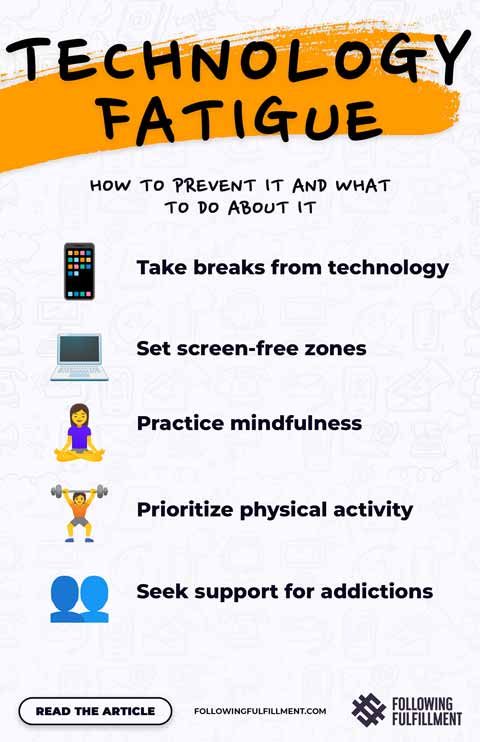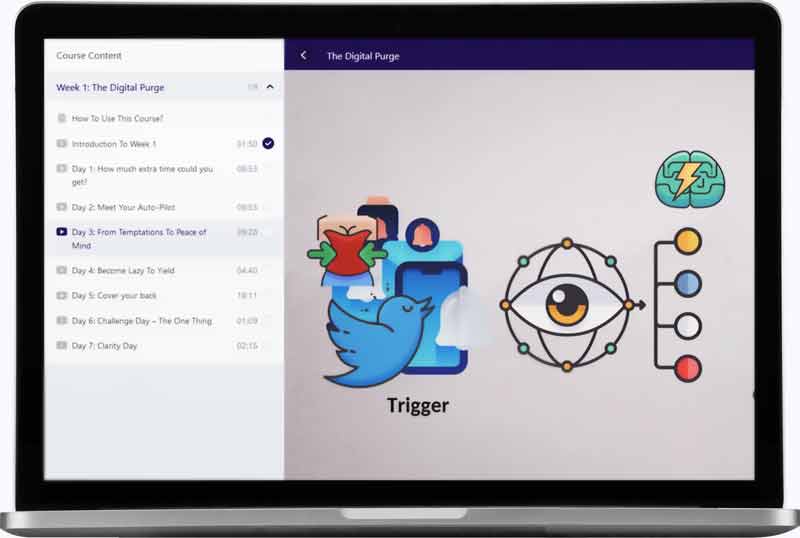- What is Technology Fatigue and Why Does it Happen?
- The Effects of Excessive Technology Use on Mental and Physical Well-being
- Managing Technology Fatigue: Strategies for a Healthy Digital Lifestyle
- Technology Fatigue in the Workplace: Balancing Efficiency and Well-being
- Overcoming Digital Addiction: Seeking Support and Professional Help
- Conclusion: Striving for a Balanced and Healthy Relationship with Technology

What is Technology Fatigue and Why Does it Happen?

Technology has become an integral part of our daily lives, from smartphones and laptops to social media and streaming services. However, with this constant connection and reliance on technology comes a phenomenon known as technology fatigue. In this subpart, we’ll explore what technology fatigue is, its causes, and how it can affect our physical and mental health.
The Effects of Excessive Technology Use on Mental and Physical Well-being

Excessive use of technology can lead to technology fatigue, a state of mental and physical exhaustion caused by overexposure to digital devices and platforms. This subpart will explore the effects of excessive technology use on mental and physical well-being, and provide tips on how to prevent and manage technology fatigue.
Symptoms and Signs of Technology Fatigue
Technology fatigue or digital burnout can manifest in different ways. Here are some symptoms and signs that you may be experiencing:
- Insomnia or difficulty falling asleep
- Headaches and eye strain
- Neck, shoulder, and back pain
- Feeling anxious or irritable when away from your devices
- Difficulty concentrating or staying focused
- Decreased productivity and creativity
- Increased procrastination and distraction
- Feeling overwhelmed or stressed due to the constant barrage of notifications and information
- Decreased social interaction and face-to-face communication
If you notice any of these symptoms, it may be time to take a break and consider a digital detox to recharge and refresh your mind and body.
The Role of Information Overload in Technology Fatigue
Information overload is one of the leading causes of technology fatigue. With the constant barrage of notifications, emails, and social media updates, it’s easy to feel overwhelmed and unable to disconnect from our devices. This overload can lead to a feeling of burnout, making it difficult to focus on tasks or take in new information. To combat information overload, it’s important to establish boundaries and limit the amount of time spent on devices. This can include setting specific times to check emails or social media, or even taking breaks throughout the day to disconnect entirely. By managing our technology use and minimizing information overload, we can reduce the symptoms of technology fatigue and improve our overall well-being.
How Constant Connectivity Impacts Productivity and Focus
Constant connectivity can have a negative impact on productivity and focus. Being constantly connected to digital devices and platforms can lead to distractions, interruptions, and a lack of deep focus. The constant flow of notifications, emails, and messages can make it difficult to stay on task and complete important work. Additionally, the constant need to check and respond to digital stimuli can lead to a decreased ability to concentrate and engage in deep work. Research has also shown that excessive use of digital devices can lead to increased stress levels, decreased sleep quality, and decreased productivity. In order to combat these negative effects, it is important to engage in regular digital detoxes and limit the amount of time spent on digital devices. This can help to improve productivity, reduce stress, and improve overall well-being.
Managing Technology Fatigue: Strategies for a Healthy Digital Lifestyle

As technology continues to evolve at a rapid pace, it’s no surprise that many of us are experiencing a sense of technology fatigue. This feeling of overwhelm and burnout can lead to a range of negative impacts on our mental and physical health. However, there are strategies that can help us manage this fatigue and create a healthy digital lifestyle. In this section, we’ll explore some of the most effective techniques for taking control of your relationship with technology and reducing the negative effects of digital overload.
Practicing Digital Detox: Unplugging to Recharge
Digital detox is the practice of disconnecting from technology and taking a break from the digital world. It involves unplugging from electronic devices such as smartphones, laptops, and tablets to reduce stress, improve mental health, and enhance overall well-being. Digital detox can help individuals become more mindful, present, and focused by allowing them to take a break from the constant distractions of technology. It can also improve sleep quality, reduce eye strain, and provide a much-needed break from the constant stimulation of social media and the internet. Practicing digital detox can be done in many ways, such as taking a break from social media, turning off notifications, or taking a technology-free vacation. It is important to make digital detox a regular part of our routine to improve our mental and physical health.
Establishing Screen-Free Zones and Boundaries
One effective way to practice digital detox is by establishing screen-free zones and boundaries. This means creating physical spaces or designated times where digital devices are not allowed or used minimally. For example, you can make your bedroom a screen-free zone, keeping all gadgets outside the room to promote better sleep and relaxation. You can also set designated times for checking emails or social media, and avoid using them during meals or family time. Additionally, you can limit the use of screens before bedtime to prevent disruption of your sleep patterns. By setting boundaries and sticking to them, you can reduce your dependence on technology and enjoy more meaningful interactions with the people around you.
Mindful Technology Consumption: Quality over Quantity
When it comes to digital detox, it’s not just about reducing the amount of time we spend online, but also about being mindful of the quality of our technology consumption. Instead of mindlessly scrolling through social media or binge-watching TV shows, we should focus on consuming content that adds value to our lives. This means being intentional about the apps we use, the websites we visit, and the people we connect with online. Prioritizing quality over quantity can help us avoid the negative effects of technology addiction and improve our overall well-being. It’s important to remember that technology is a tool, and it’s up to us to use it mindfully and intentionally to enhance our lives, rather than letting it control us.
Prioritizing Self-Care and Physical Activities
One of the most effective ways to achieve digital detox is by prioritizing self-care and physical activities. Engaging in physical activities such as exercise, yoga, hiking, or sports not only helps you stay away from digital devices but also helps you maintain a healthy lifestyle. Prioritizing self-care activities such as meditation, reading, or spending time with family and friends can also help you reduce your screen time. It’s essential to set aside time for self-care activities and physical exercise to ensure a healthy lifestyle while reducing the dependence on digital devices. Making these activities a priority can help you build healthier habits and reduce the stress and anxiety caused by excessive screen time.
Technology Fatigue in the Workplace: Balancing Efficiency and Well-being

As technology continues to advance and permeate every aspect of our lives, it’s no surprise that many people are experiencing technology fatigue. This is especially true in the workplace, where employees are expected to be constantly connected and available. Balancing the need for efficiency with the need for well-being is crucial to preventing technology fatigue in the workplace. In this section, we’ll explore some practical tips for finding that balance and avoiding burnout.
Overcoming Digital Addiction: Seeking Support and Professional Help

In today’s digital age, it’s easy to become addicted to technology. Whether it’s constantly checking our phones, scrolling through social media, or binge-watching Netflix, our reliance on technology can take a toll on our mental health. If you’re struggling with digital addiction, seeking support and professional help can be key to overcoming technology fatigue. Here’s what you need to know.
The Role of Therapy and Counseling in Addressing Technology Addiction
Therapy and counseling play a crucial role in addressing technology addiction. These treatment modalities help individuals identify the root causes of their addiction and develop coping mechanisms to manage their technology use. Cognitive-behavioral therapy (CBT) is one type of therapy that has shown promise in treating technology addiction. CBT helps individuals understand and modify their thoughts and behaviors related to technology use. Additionally, counseling can help individuals address any underlying mental health issues that may be contributing to their addiction, such as anxiety or depression. Group therapy can also be beneficial as it allows individuals to connect with others who are going through similar struggles and provides a supportive environment for recovery. Ultimately, therapy and counseling can be effective tools in helping individuals overcome technology addiction and achieve a healthier relationship with technology.
Support Groups and Communities for Technology Fatigue Recovery
Joining a support group or community for technology fatigue recovery can be immensely helpful in overcoming digital addiction. These groups provide a safe space to share experiences, struggles, and tips on how to disconnect from technology and live a more balanced life. You can find various online communities that cater to different needs, such as social media detox, smartphone addiction, or general digital detox. Additionally, in-person support groups offer face-to-face interaction and a chance to connect with like-minded individuals. Some popular support groups and communities for technology fatigue recovery include Digital Detox, Offscreen, and Center for Humane Technology. Joining these groups can provide motivation, accountability, and a sense of community in your journey towards a healthier relationship with technology.
Developing Healthy Digital Habits and Routines
To achieve a successful digital detox, developing healthy digital habits and routines is essential. Firstly, setting boundaries is crucial. Create a schedule that includes designated times for work and leisure, as well as unplugged time. Secondly, establish technology-free zones, such as the bedroom or dinner table, to promote face-to-face interactions and better quality sleep. Thirdly, limit screen time by using apps that track usage and setting time limits on social media and other apps. Fourthly, prioritize self-care activities like exercise, meditation, or reading a book. Finally, consider incorporating technology-free activities into your routine, such as outdoor walks or hobbies that don’t require a screen. By implementing these healthy habits and routines, you can reduce digital overload and promote a more balanced and fulfilling lifestyle.
Conclusion: Striving for a Balanced and Healthy Relationship with Technology
In conclusion, technology is an integral part of our lives, but it is essential to maintain a balanced and healthy relationship with it. To prevent technology fatigue, it is crucial to take breaks, set boundaries, and prioritize self-care. By doing so, we can enjoy the benefits of technology without experiencing its negative effects. Remember, technology should serve us, not the other way around. It’s time to take control of our relationship with technology and strive for a balanced and healthy approach.

